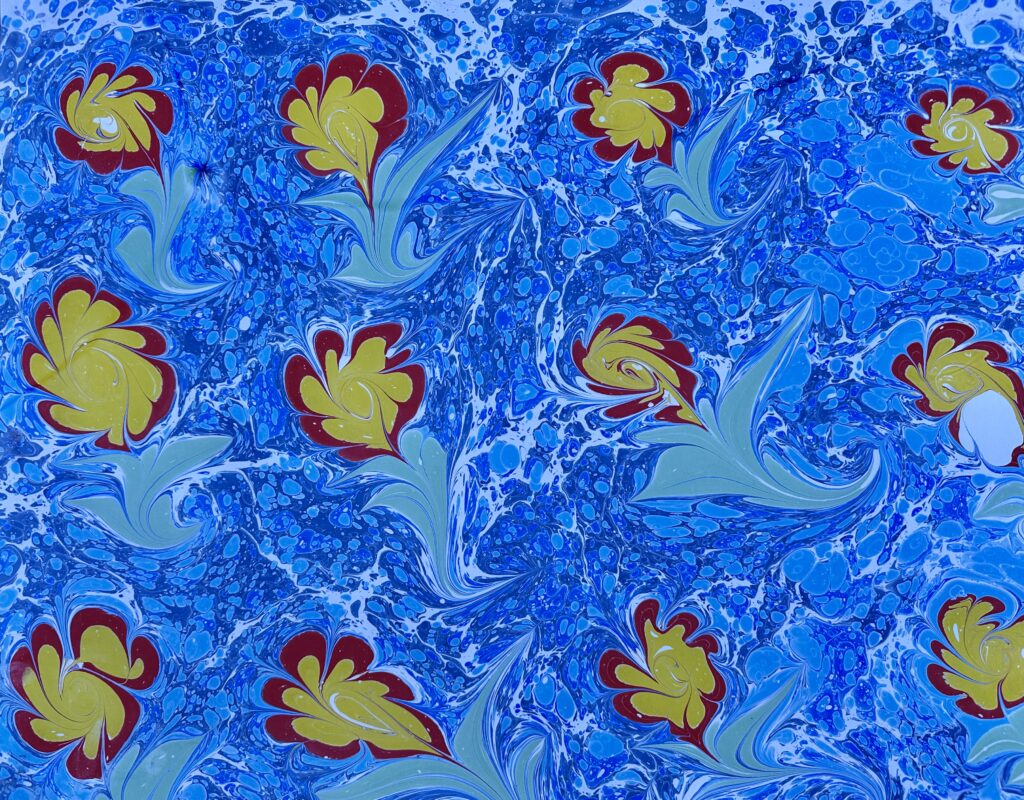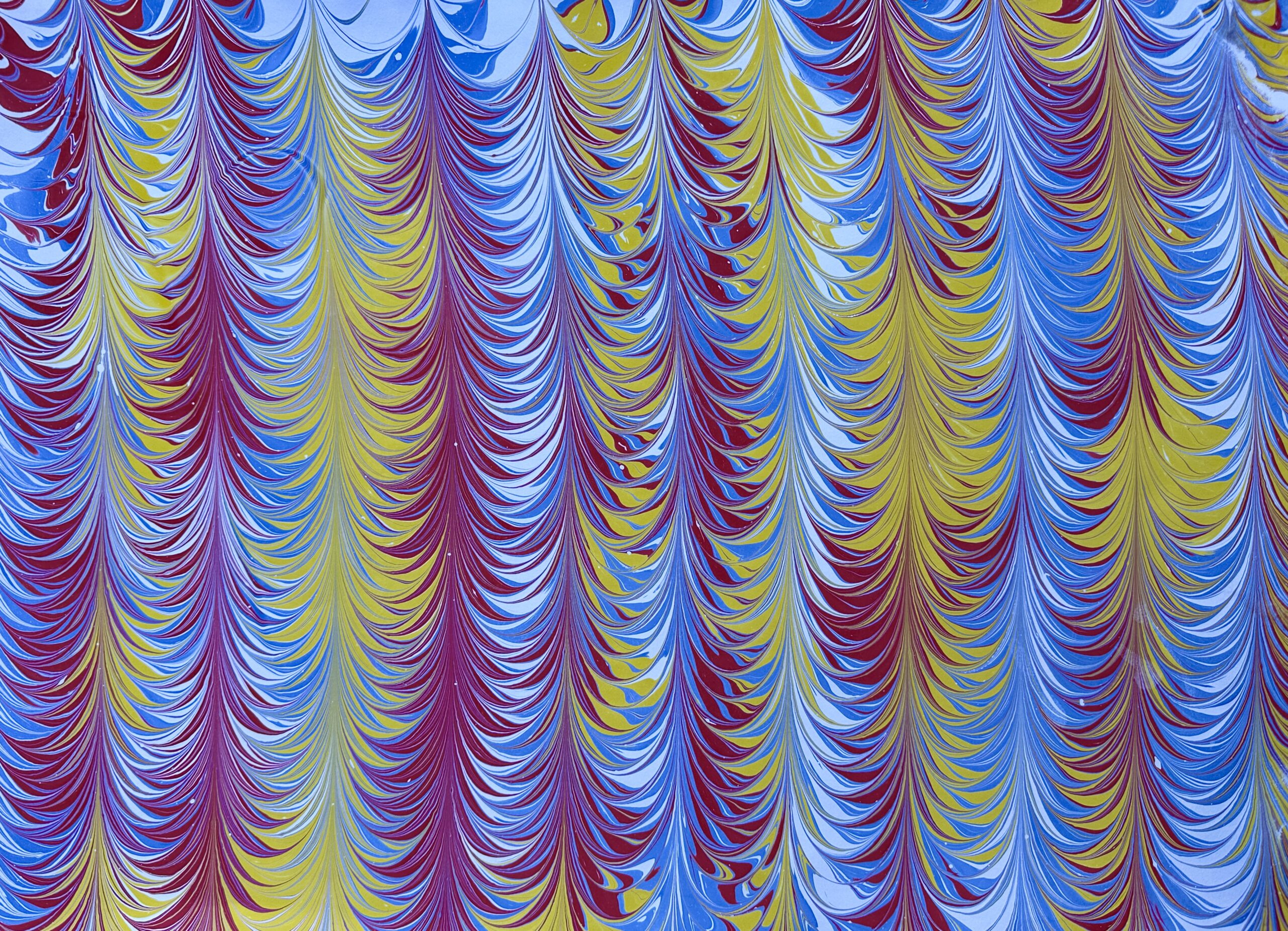Over the weekend just past I took part in an activity I last tried about forty years ago. I remember how much I enjoyed all the elaborate steps preparing to make papers with the most beautiful and traditional marbled patterns. Being the hoarder I am I was able to find my many original attempts in the 1990s. I remember building combs and rakes, and other tools and mixing the different colours and preparing the amazing carragheen moss size.
So it was great to be able to attend a workshop at the NSW Guild of Craft Bookbinders Bindery for an extraordinarily well prepared few days of marbling. Glenda our teacher and her friend Margaret had transformed the bindery into a dedicated marbling studio, so that we were able to start making papers very quickly.
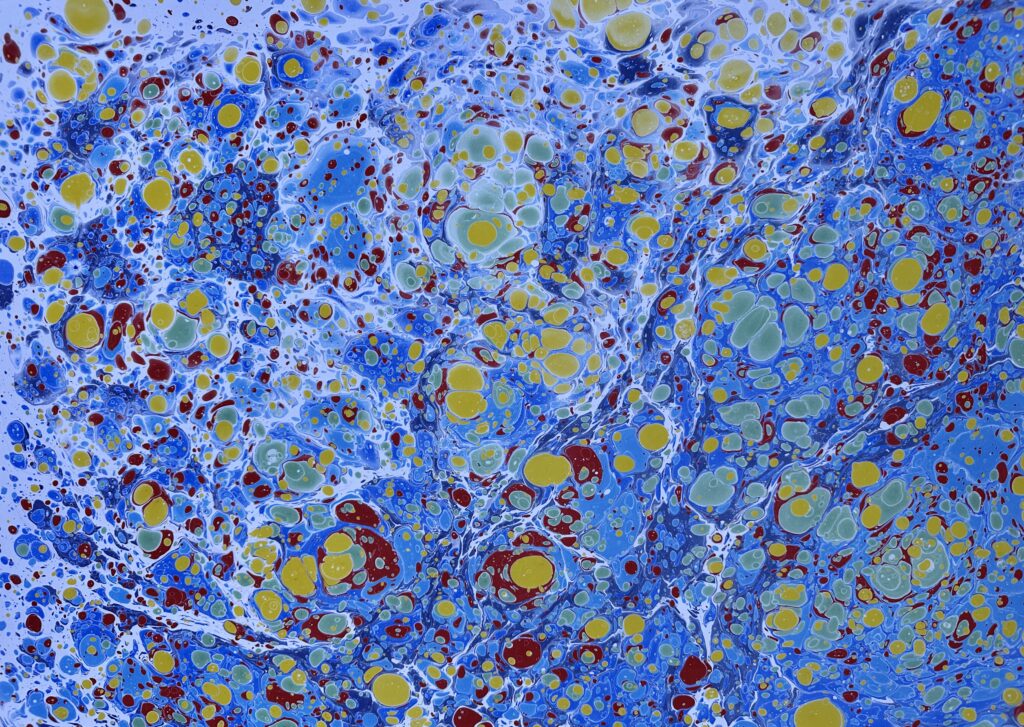
Aspects I hadn’t appreciated in my earlier time playing with marbling included a methodical testing of each colour at the start (and frankly monitoring them throughout the day) to ensure the density and viscosity of each colour was correct. Another aspect Glenda stressed was logging what you do, noting the proportions of colour to water and/or ox gall to adjust each colour. I have no memory of being so systematic and methodical before. It was becoming clear why I made the mistakes and glitches I did in my earlier attempts. And of course continued to make! I still need more practice laying the paper on the size without capturing air bubbles or other strange faults.
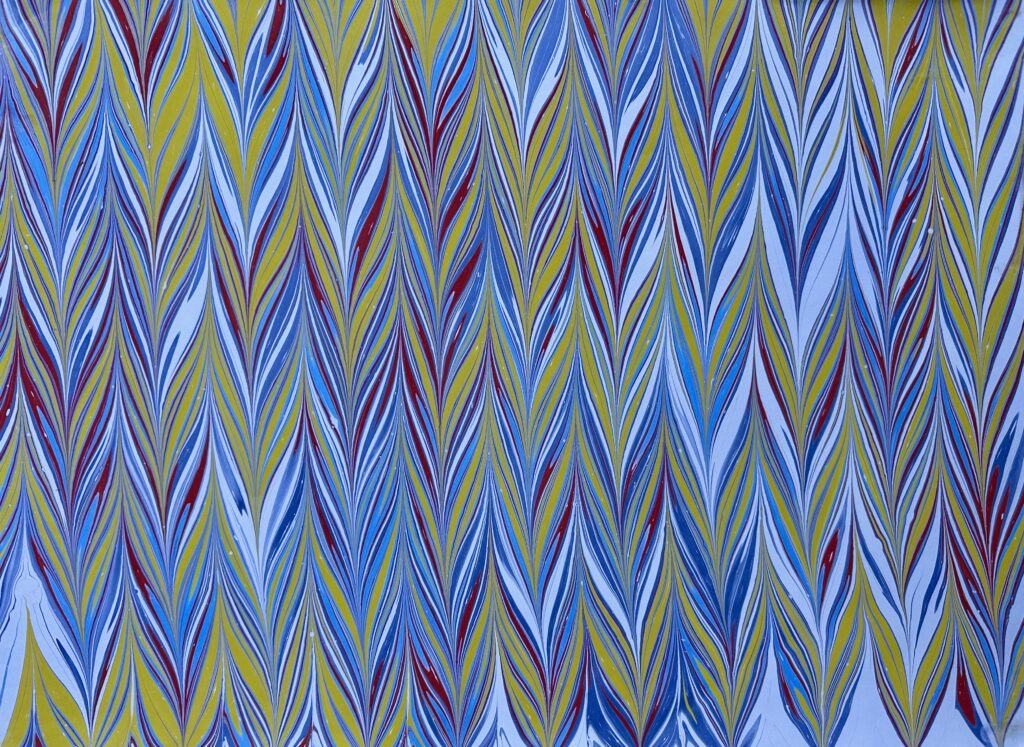
There are so many factors to control, cleaning the carragheen bath after each sheet and the preparation of the paper and the colours. The colours require constant stirring and tending. There’s barely brain space left over to decide what style to try. Each of us was given a folder of notes illustrating the different marbling patterns to try, along with the specific sequence of applying colours, raking this way and that with this rake, and then another finer one. And all this technique informed ultimately by the alignment of the pattern you want with the actual grain of the papers we were using.
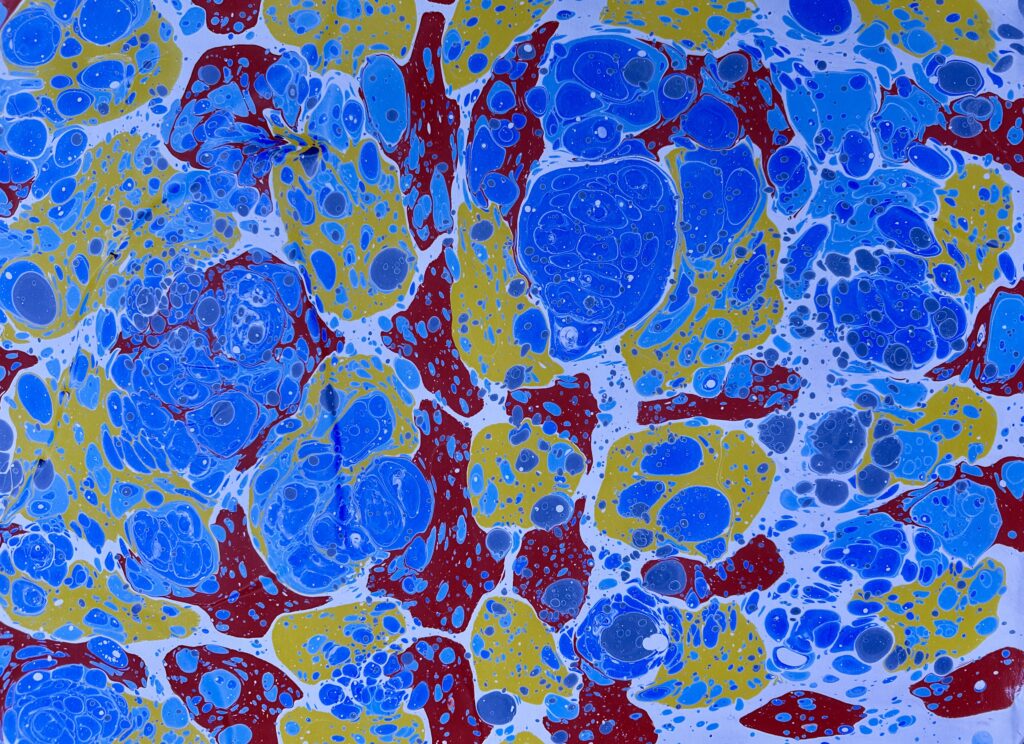
The best thing was understanding how to gain more control over the colours and managing the surface tension on the tank. There’s another aspect I was unaware of in my earlier unguided experiments – the requirement to essentially recalibrate the tank before laying on the colours for each print by simply passing a width of scrap newspaper across the length of the size not simply to clean the size but mainly to effectively discharge the surface tension.
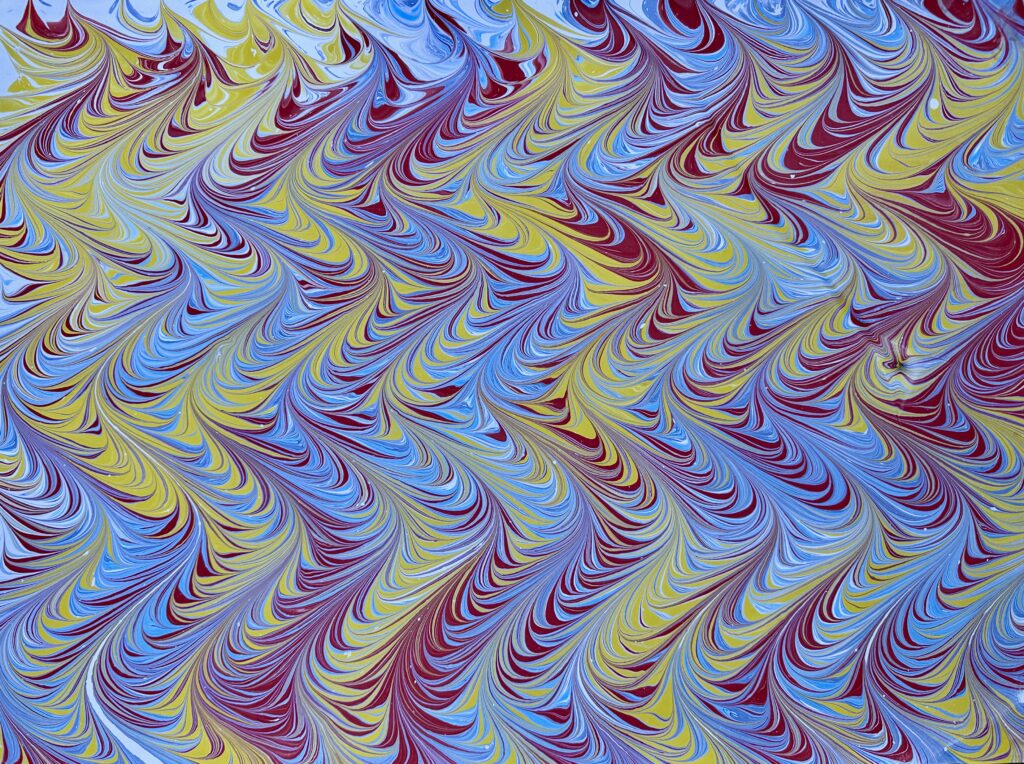
That understanding enhanced the sensual delight of playing with the colours floating on the caragheen moss size and transforming them with the different rakes and tools. We also played with an ancestor of western marbling, Turkish ebru. Delightful fun! It’s magical what a simple thin skewer or needle can do to a floating circle of colour.
